Make your own potting mix at home easily and inexpensively by following these step-by-step instructions. Listed are the potting soil mix ratios needed to make the best soil for your outdoor potted plants.
If you would like to make your own potting soil mix for your outdoor containers it is quite easy to do. Mixing your own potting soil you know exactly what is in the mixture. This helps when you are growing different types of plants. You can adjust potting soil mixture ingredients based on the nutritional requirements of the plants. You can also mix an organic potting soil mixture easily.
Homemade Potting Mix | How to Make Your Own Potting Soil
This is a generic potting mix recipe that is suitable for many types of plants. If you have a plant that has a specific nutrient need, for best results and healthy plants, consult the garden center where you purchased that plant.
I will say that the Miracle Grow potting mix is not bad at all if you are and they also have an organic mix if you are an organic gardener. Fro their website: Miracle-Gro® Potting Mixes contain a blend of sphagnum peat moss, aged bark fines, perlite, plant food, and a wetting agent. Miracle-Gro® Moisture Control® Potting Mix also contains coir (coconut husks) to help protect against over and under-watering.
However, making your own potting soil recipe allows you to choose your own primary ingredients, add in natural fertilizer, organic fertilizer, kelp meal, earthworm castings, feather meal, dolomitic limestone (I use this in my vegetable garden containers), alfalfa meal, blood meal – basically any nutrient or fertilizer that you might need to customize your soil mixes for your flower pots, window boxes, or vegetable containers. You can even make a soil mixture for one particular plant!
People wonder what to do with the potting soil once the season is over. Some people leave it for the next year. I tried that once. ONCE. That was all it took for me to know that was not for me. The roots of the plants take over the soil in the pot. Hubby suggested I screen the soil and reuse it. I laughed in his face. I am sure there are many people who do this, and that is fine for them. If I were 30 years old I might consider it, but at my age? The spent potting soil is dumped into my garden beds to become garden soil at the end of the season. I do pull out the clumps of roots instead of waiting for them to decompose as we now have very formal gardens.
Difference between potting soil and potting mix?
Potting soil is dirt without additives. Potting mix is the elements that induce growth such as perlite, vermiculite, bone meal, worm castings, compost, organic matter, etc. If you have ever picked up a bag of garden soil in one hand, and potting soil in the other hand, you will note the difference. Potting soil is dense (just dirt), and potting soil mix is potting soil + potting mix very light and airy.
How much soil is required for a pot?
Instead of figuring out the math, here are two good resources for how much potting soil you will need per pot size:
How Much Dirt Does It Take to Fill Up a One-Gallon Pot? – this explains that it is dry soil, so a one-gallon pot needs 3 quarts of dry soil to fill it. But, do not forget that you also need something for drainage at the bottom such as these Bloem Ups-A-Daisy Round Planter Lift Inserts (which I use in my own post) or clean stones and rocks (wash thoroughly as you’d hate to introduce garden pests into your pest-less gardening soil).
This article nicely breaks down how much per pot so you know how much to buy to fill your pots.
Benefits of these potting soil mixture ingredients:
Note: this is without the potting soil which you may add after mixing these together.
● Peat Moss: Improved soil drainage to prevent soggy soil and root rot. Lowered soil pH for plants that thrive in acidic conditions. Slower decomposition and resistance to compaction.
● Worm Casting: Do not burn plant roots. They contain microorganisms that support healthy soil (including potting soil). They also may discourage root rot and other plant diseases, as well as provide natural resistance to pests including aphids, mealybugs, and mites.
● Perlite: This is amorphous volcanic glass heated to 1600 degrees and it expands to 13 times its original size! It improves soil aeration. Making dense soil lighter and less compact. Increasing water drainage. Better nutrient retention. Reusable because it does not decompose. pH neutral. Suitable for organic gardening.
● Mushroom Compost: This type of compost is reasonably inexpensive. It enriches the soil and supplies nutrients for the healthy growth of plants. Mushroom compost is organic material suitable for most garden plants. It supports various types of plant growth from fruits and vegetables to herbs and flowers.
If you need smaller quantities of potting soil or a different mixture specifically for vegetable gardening or tomato gardening you might like to read this Potting Soil Mixtures for Container Gardening post where I describe my small potting soil mixtures.
You can purchase all the ingredients necessary to make your homemade potting soil mixture at local gardening centers, gardening nurseries, Home Depot or Lowes, or can be ordered online.
Potting Mix Ingredients:
● Sphagnum Peat Moss
● Mushroom Compost
● Worm Castings
● Perlite
● Fertilizer/Plant Food*
● Potting Soil*
● 2 Gallon Bucket
● Wheelbarrow (you can use a smaller container if you do not have a wheelbarrow)
● 70 ounce (empty) Coffee Can
● Shovel
*Added depending on the needs of your plants and what you are growing.
Potting Mix Ratio:
For an easy mixture, use a 2-gallon container and a 70-ounce coffee can.
● Peat Moss -3 parts (2-gallon mixing container)
● Mushroom Compost – 1 part (2-gallon)
● Perlite- 1 small part (70 oz coffee can)
● Manure or worm casting – 1 small part (70 oz coffee can)
● Potting soil – based on what you are planting, and how loose you would like your soil.
Potting Mix Directions:
1. Fill your 2-gallon mixing container with peat moss.
2. Empty Peat Moss into a wheelbarrow.
3. Repeat this two more times to equal so there are six (6) gallons of sphagnum moss in the wheelbarrow.
4. Using a shovel to break down the peat moss to ensure there are no clumps.
5. Fill your 2-gallon container with mushroom compost.
6. Empty the container of mushroom compost into a wheelbarrow of peat moss.
7. Mix the mushroom compost into the peat moss.
8. Fill the coffee can with perlite.
9. Empty the coffee can that is filled with perlite into the wheelbarrow to join the peat moss and mushroom compost.
10. Mix in the perlite.
11. Fill the coffee can with worm casting.
12. Empty the coffee that is filled with worm casting can into the wheelbarrow to join the three other ingredients.
13. Using a shovel mix the peat moss, mushroom compost, perlite, and worm casting thoroughly. Be sure to break down everything into a very even mixture with no lumps or clumps. You want to be able to run your fingers through the mixture and encounter no chunks.
14. If you would like to add commercial plant food, now is the time! Get a plant food that is specifically formulated for vegetables, flowers, herbs; whatever you are planting.
15. You can now add this mixture to your container garden soil for healthier container gardens, add it to garden soil for a nutrient-rich garden, or plant in this mixture alone. Great for growing seedlings with this mixture alone (the seedlings will be transferred to a potting soil mixture that contains potting soil). I will admit to using this mixture without adding soil in regular pots, although adding gardening soil is great! When you are adding soil to this mixture make certain you mix thoroughly before adding to your pots and planting. If you are using this mixture in your garden beds, simply work into the soil with a shovel and rake.
Homemade Potting Mix | How to Make Your Own Potting Soil
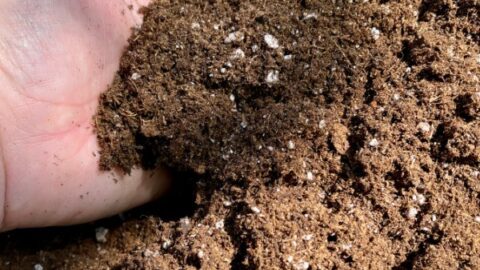
Homemade Potting Mix | How to Make Your Own Potting Soil. Make your own potting mix at home easily and inexpensively by following these step-by-step instructions. Listed are the potting soil mix ratios needed to make the best soil for your outdoor potted plants.
Materials
- Sphagnum Peat Moss
- Mushroom Compost
- Worm Castings
- Perlite
- Fertilizer/Plant Food*
- Potting Soil*
Tools
- 2 Gallon Bucket
- Wheelbarrow (you can use a smaller container if you do not have a wheelbarrow)
- 70 ounce (empty) Coffee Can
- Shovel
Instructions
- Fill your 2-gallon mixing container with peat moss.
- Empty Peat Moss into a wheelbarrow.
- Repeat this two more times to equal so there are six (6) gallons of sphagnum moss in the wheelbarrow.
- Using a shovel to break down the peat moss to ensure there are no clumps.
- Fill your 2-gallon container with mushroom compost.
- Empty the container of mushroom compost into a wheelbarrow of peat moss.
- Mix the mushroom compost into the peat moss.
- Fill the coffee can with perlite.
- Empty the coffee can that is filled with perlite into the wheelbarrow to join the peat moss and mushroom compost.
- Mix in the perlite.
- Fill the coffee can with worm casting.
- Empty the coffee that is filled with worm casting can into the wheelbarrow to join the three other ingredients.
- Using a shovel mix the peat moss, mushroom compost, perlite, and worm casting thoroughly. Be sure to break down everything into a very even mixture with no lumps or clumps. You want to be able to run your fingers through the mixture and encounter no chunks.
- If you would like to add plant food, now is the time! Get a plant food that is specifically formulated for vegetables, flowers, herbs; whatever you are planting.
- You can now add this mixture to your container garden soil for healthier container gardens, garden soil for a nutrient-rich garden, or plant in this mixture alone. Great for growing seedlings with this mixture alone (the seedlings will be transferred to a potting soil mixture that contains potting soil). I will admit to using this mixture without adding soil in regular pots, although adding gardening soil is great! When you are adding soil to this mixture make certain you mix thoroughly before adding to your pots and planting. If you are using this mixture in your garden beds, simply work into the soil with a shovel and rake.
Recommended Products
As an Amazon Associate and member of other affiliate programs, I earn from qualifying purchases.
-
 GIFTME 5 Metal Garden Wall Art Decorative Set of 4 Cute Ladybugs Outdoor Wall Sculptures
GIFTME 5 Metal Garden Wall Art Decorative Set of 4 Cute Ladybugs Outdoor Wall Sculptures -
 Solar Star Shower Garden Art LED Light with Stake Firefly Bunch Lights Fairy Copper Wire Waterproof String Lights, Vine Solar Watering Can Lights Outdoor Garden Eid Mubarak Easter Metal Decor Lights
Solar Star Shower Garden Art LED Light with Stake Firefly Bunch Lights Fairy Copper Wire Waterproof String Lights, Vine Solar Watering Can Lights Outdoor Garden Eid Mubarak Easter Metal Decor Lights -
 GIFTME 5 Metal Ant Wall Decor Set of 4 Colorful Indoor Bathroom Kid's Room or Outdoor Garden Yard Art Wall Sculptures
GIFTME 5 Metal Ant Wall Decor Set of 4 Colorful Indoor Bathroom Kid's Room or Outdoor Garden Yard Art Wall Sculptures
● If you enjoyed this post, be sure to sign up for the Ann’s Entitled Life weekly newsletter, and never miss another article!
● For more Garden posts on Ann’s Entitled Life, click here.
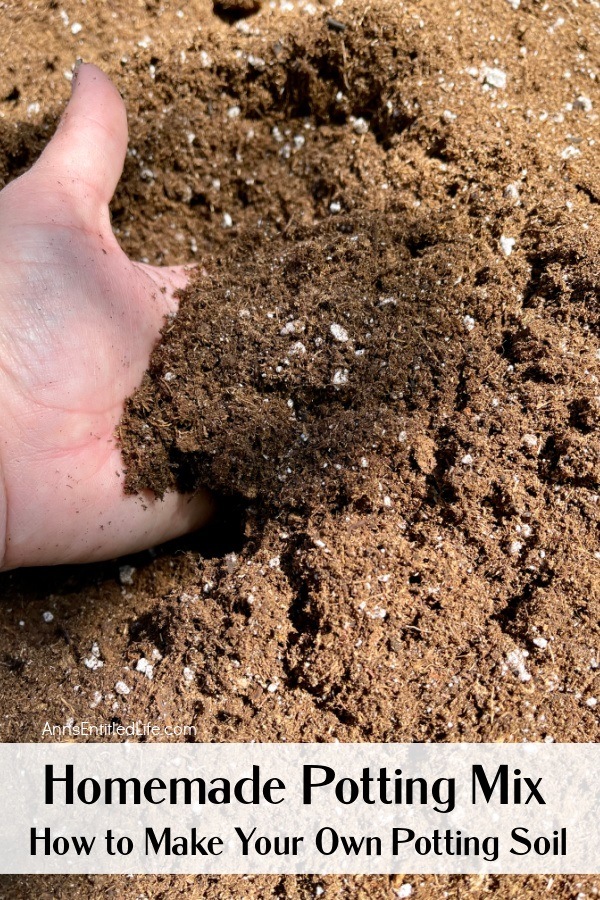
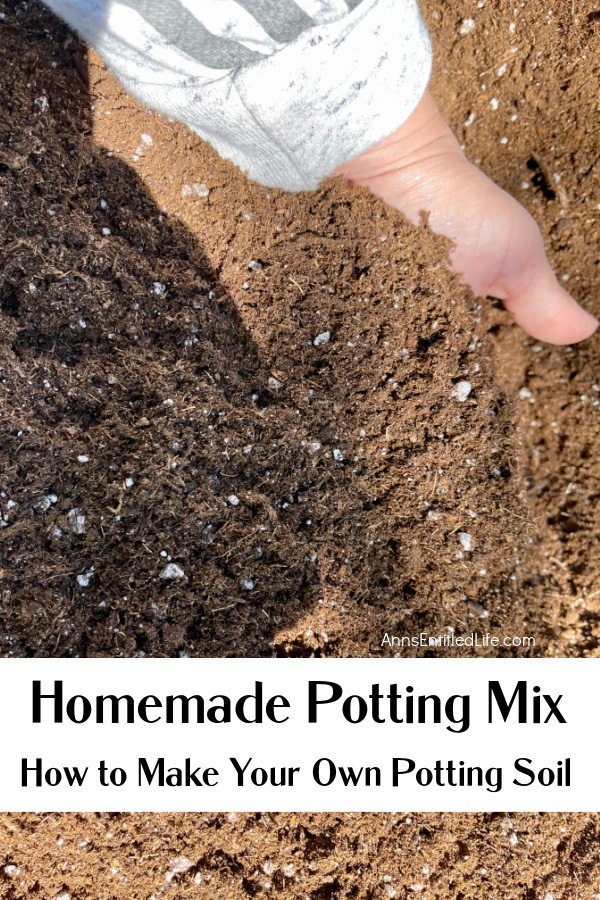
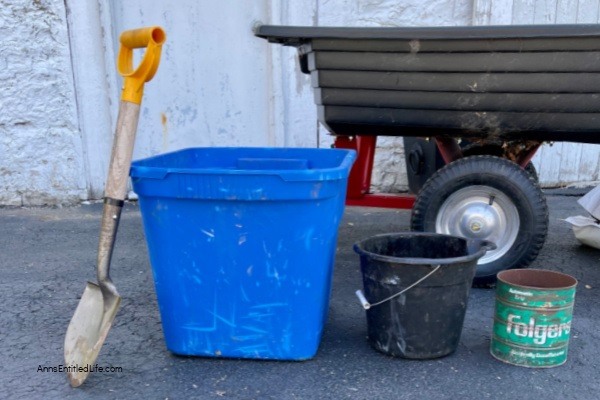
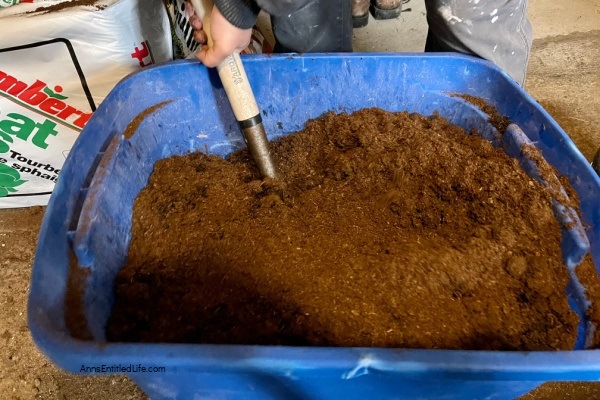
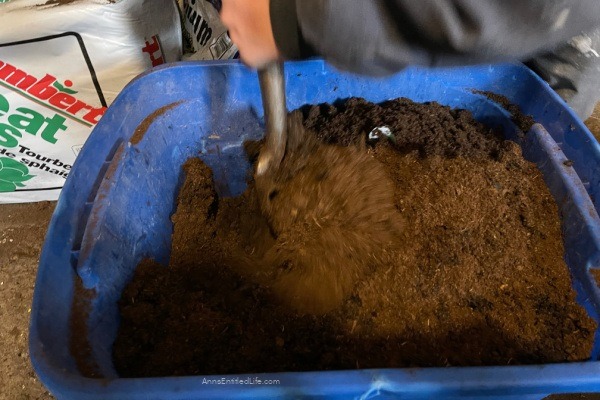
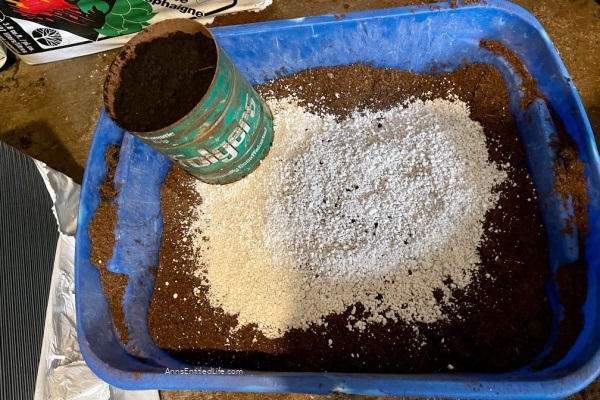
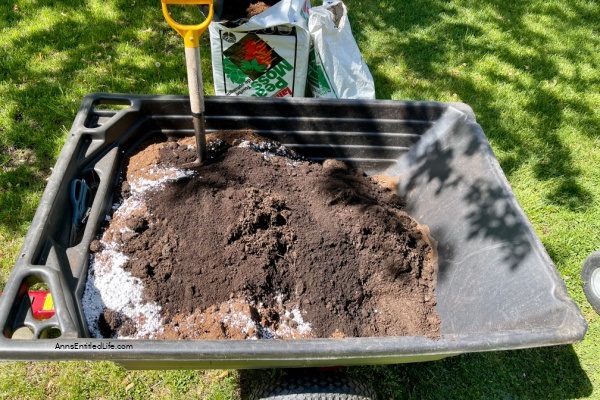
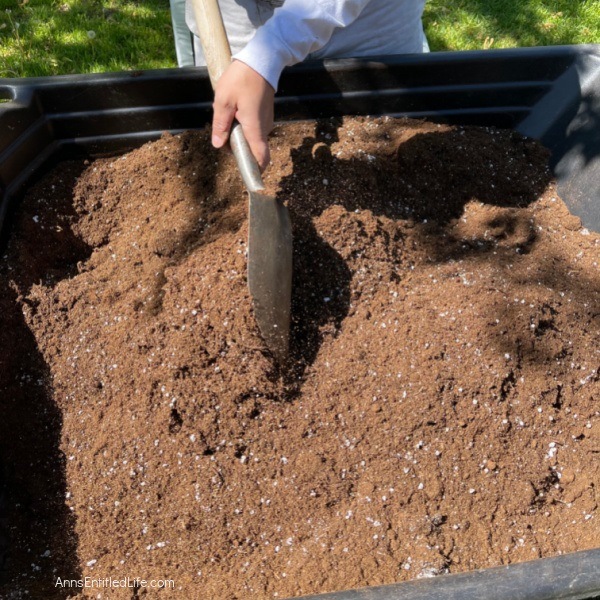
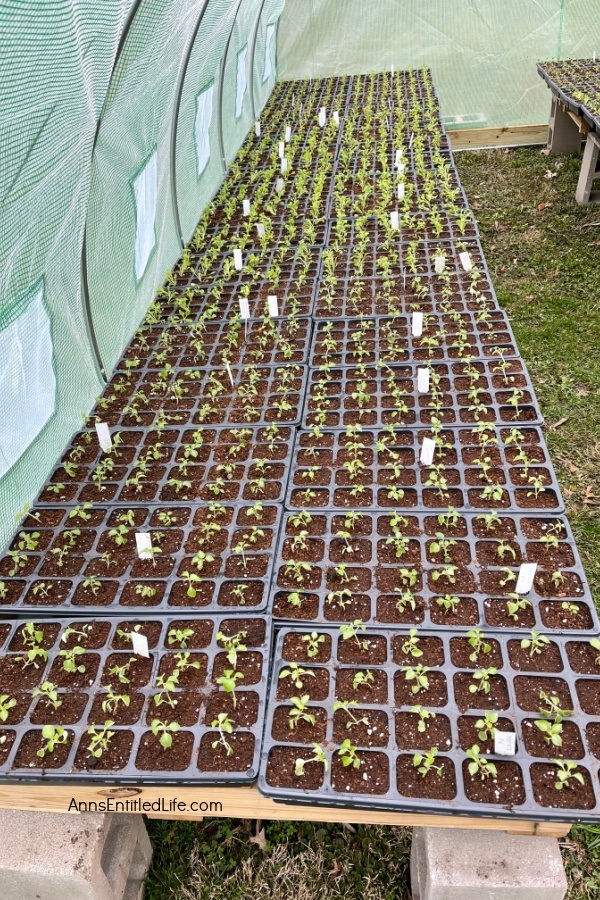



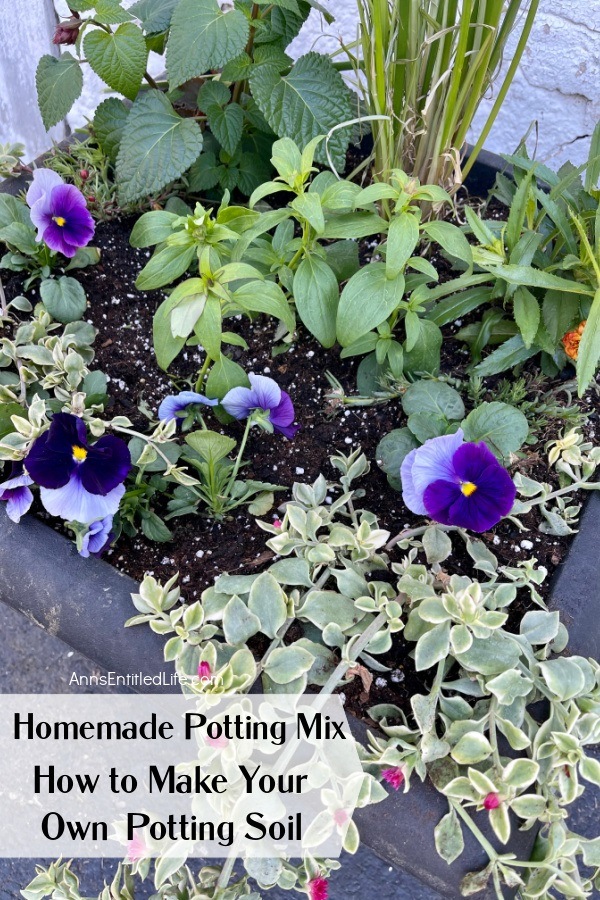
Steve Todd says
Mushroom compost is NOT organic by USDA NOP standards. It contains synthetic additives. If it was organic the mushrooms grown in it would be advertised as organic.
Ann says
Hey Steve,
Here is a link to one organic mushroom compost, and here is a link to a second organic mushroom compost and a third and a fourth. I cannot find one that isn’t organic.
You have a good day.
Ann